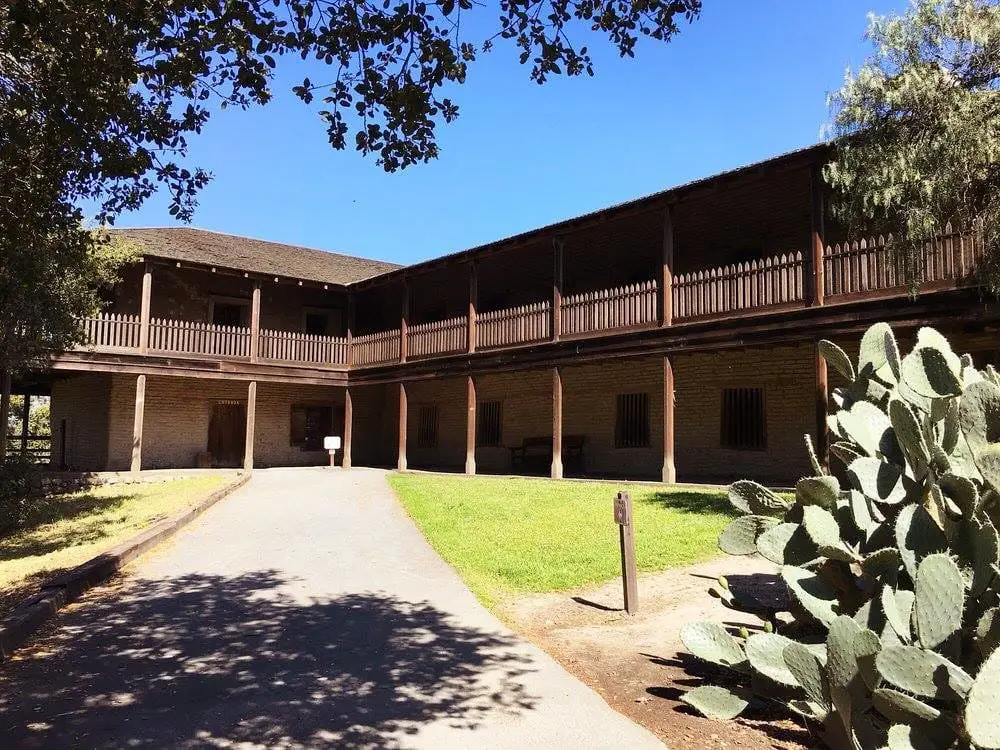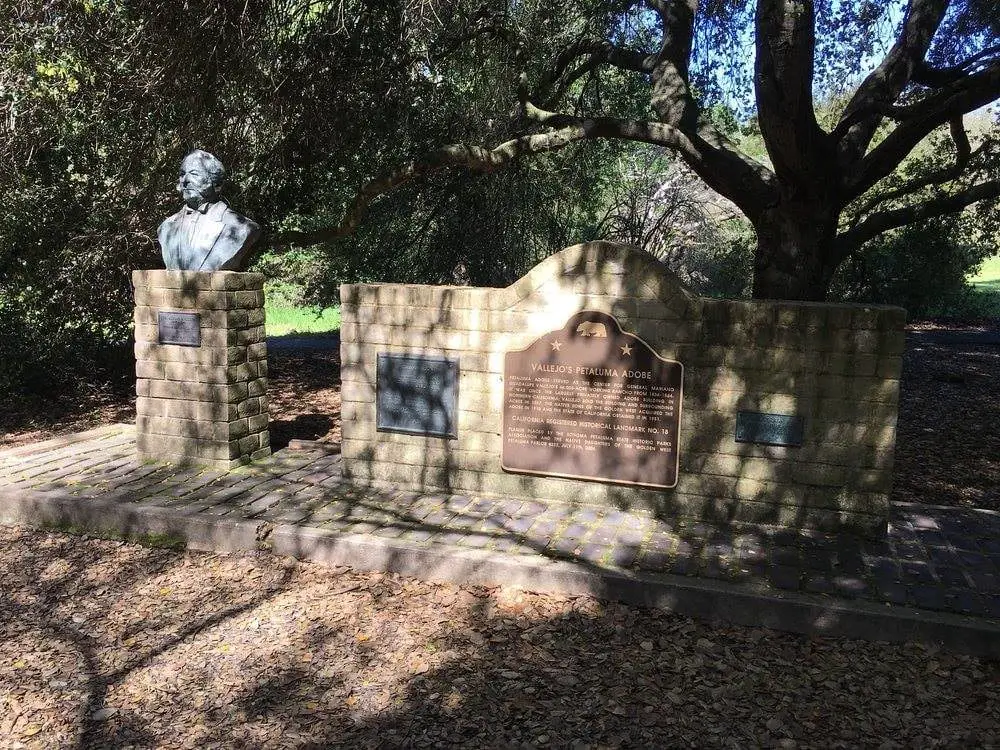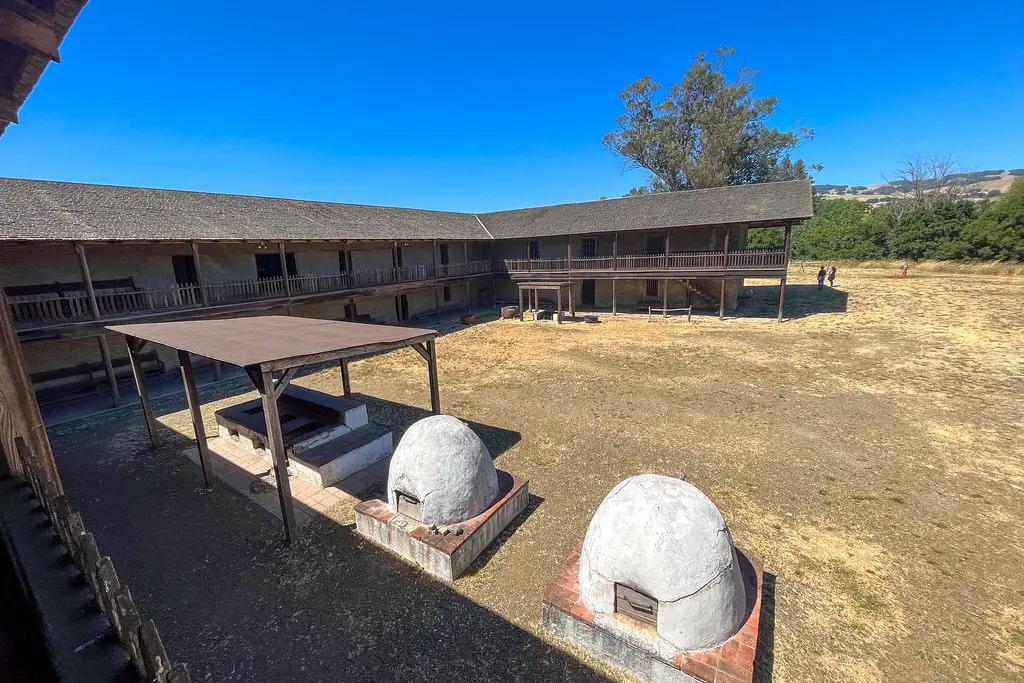The Historical Significance of Rancho Petaluma Adobe
Rancho Petaluma Adobe is a testament to a pivotal era in California's rich tapestry of history. Constructed in 1836 under the directive of Mariano Guadalupe Vallejo, this adobe structure was not merely a residence but a symbol of power and prosperity during the Mexican-American era.
Vallejo, a figure of considerable influence in the Mexican Province of California, envisioned the adobe as the heart of his agricultural empire, which spanned thousands of acres of fertile land.
The establishment of the adobe marked the beginning of a significant chapter in the region's development, serving both as a bustling headquarters of a working ranch and a defensive stronghold.
It's strategic location and robust construction reflected the dual needs of the time: economic expansion and protection against potential threats. This era was characterized by a complex interplay of political, social, and economic forces, with Rancho Petaluma Adobe at its center.
The Bear Flag Revolt of 1846, a pivotal event leading up to the Mexican-American War, underscored the importance of adobe in regional politics. Vallejo found himself and his property entangled in the conflict despite his influential status, illustrating the turbulent transition of power from Mexico to the United States.
The adobe witnessed the daily operations of a vast ranching enterprise and the shifting tides of history as California edged closer to becoming a part of the United States.
Now, the historical importance of Rancho Petaluma Adobe is safeguarded by the walls of what used to be Northern California's biggest privately owned Adobe structure. It serves as a tangible link to the past, offering insights into the lives of those who shaped the region's destiny.
For visitors interested in exploring California's heritage, things to do in Petaluma, California, include walking the grounds of this historic landmark, where the echoes of the past meet the present.
Architectural Marvel of the 19th Century
Rancho Petaluma Adobe, constructed between 1836 and 1857, is a masterpiece of Monterey Colonial architecture. This style blends New England and Spanish design elements.
This architectural gem was built using adobe bricks, hand-hewn redwood timbers, and locally sourced materials, showcasing the self-sufficiency and ingenuity of the era.
The adobe's layout, featuring two-story buildings arranged around an open courtyard of approximately 200 feet by 145 feet, was practical and strategic, serving as the operational hub of Vallejo's vast ranching operations and fortifying against potential attacks.
The adobe's design was ahead of its time. It incorporated a wide, covered second-story veranda that protected the adobe walls from weathering and provided a vantage point for defense.
The inclusion of large gates on the south and north sides of the quadrangle further emphasized its dual purpose as a place of business and a stronghold. Inside, the adobe had planked floors, a low-sloped shingled roof, and interior fireplaces. These features were luxurious for their time and indicative of Vallejo's wealth and status.
The preservation of Rancho Petaluma Adobe as a National Historic Landmark and a California Historical Landmark underscores its architectural significance and the craftsmanship of its builders.
It remains the largest example of its architectural style in the United States, a monument to the cultural fusion and architectural innovation of 19th-century California.

Daily Life at Rancho Petaluma Adobe
The daily operations of Rancho Petaluma Adobe were a microcosm of early California's bustling agricultural and social life.
Under Vallejo's leadership, the ranch became a thriving agricultural enterprise, with over 12,000 head of cattle, 3,000 sheep, and numerous crops that sustained the ranch and contributed to its prosperity.
The adobe served as a residence, administrative center, and hub for various trades and activities essential to the ranch's operations.
Artisans and workers at the ranch engaged in various activities, from tanning hides to crafting candles, soap, and wool blankets.
The ranch's tannery, smithy, and grist mill, powered by Adobe Creek, were vital components of its economic ecosystem. They produced goods for trade and supported the needs of Vallejo's military troops.
The annual matanza, or slaughtering season, was particularly busy, culminating in the fandango. This celebration brought the community together with music, dance, and feasting.
The workforce of Rancho Petaluma Adobe was diverse, including Native Americans who were integral to the ranch's operations.
Skilled workers from the secularized missions brought valuable expertise in various crafts and trades, contributing to the ranch's self-sufficiency and economic output.
The ranch's social structure reflected the hierarchical society of the time, with the Vallejo family at the apex, followed by the majordomo (foreman), skilled craftsmen, and laborers.
Life at Rancho Petaluma Adobe was marked by hard work, community, and the rhythms of the agricultural calendar. It was a place where the complexities of California's colonial past were played out daily against the backdrop of one of the most prosperous private estates of the Mexican Period.

Decline and Preservation
The fortunes of Rancho Petaluma Adobe began to change in the mid-19th century, particularly during and after the Mexican-American War (1846-1848).
The war brought significant upheaval to the region, and Vallejo himself was imprisoned, signaling a dramatic shift in the control and fate of his properties.
The ranch suffered from the requisitioning of its resources by John C. Frémont and the California Battalion, leading to a steep decline in productivity and value.
Many of the Native American workers, who were the backbone of the ranch's labor force, left the area due to the conflict and changing conditions.
In 1857, Vallejo sold the adobe and surrounding land to William Whiteside for $25,000, a fraction of its former worth.
The property changed hands again when it was sold to William Bliss, under whose ownership the southeast half of the adobe fell into disrepair.
The decline of Adobe mirrored the broader transitions occurring in California as it integrated into the United States and moved away from its Mexican colonial past.
The turn of the 20th century marked the beginning of efforts to preserve Rancho Petaluma Adobe. In 1910, the Native Sons of the Golden West, recognizing the adobe's historical value, purchased it and began the restoration process.
Their efforts, combined with those of the State of California, culminated in establishing the adobe as a state historic park in 1951.
The site's designation as a National Historic Landmark in 1970 further solidified its status as a key historical and cultural resource.

Rancho Petaluma Adobe Today
Today, Rancho Petaluma Adobe State Historic Park offers visitors a glimpse into California's ranching and colonial past.
The open daily park invites exploration of the largest privately owned adobe building from the 1830s and 1840s, now preserved as a museum.
Authentic furniture and exhibits within the adobe provide insights into the ranch's daily life and operations, showcasing the blend of Mexican and Native American cultures that characterized the period.
Nestled in the picturesque landscape of Sonoma County, Petaluma, California, the park attracts history buffs, families, and teachers alike.
Guests can partake in guided tours that explore the adobe's past, its design, and the stories of those who once called it home.
The surrounding grounds, with picnic areas and views of the farmland and oak-studded hills, offer a peaceful setting for reflection and relaxation.
Educational programs at the park engage students and the public in hands-on learning experiences about early California history, agriculture, and the diverse cultures that shaped the region.
Special events throughout the year, including living history days and cultural celebrations, bring the past to life and connect the community to its heritage.
Rancho Petaluma Adobe State Historic Park is a vital link to the past. It preserves the legacy of Mariano Guadalupe Vallejo's ranch and offers a window into California's complex history.
Its continued preservation and interpretation provide valuable lessons on the state's transition from a Mexican province to an American state, the impacts of colonization, and the importance of preserving historical sites for future generations.

Recent Developments and Community Engagement
In recent years, Rancho Petaluma Adobe State Historic Park has seen various developments to enhance the visitor experience and preserve the site for future generations.
Efforts to maintain and restore the adobe structure continue, with attention to preserving its historical integrity while making it accessible to a wider audience.
Community engagement has played a crucial role in these efforts, with local volunteers and organizations contributing time and resources to the park's upkeep and educational programs.
The park has also embraced modern technology to share its rich history, including developing virtual tours and interactive online resources.
These digital offerings allow people worldwide to explore adobe and learn its significance in California's history.
Additionally, the park has hosted events and workshops focusing on traditional crafts, agriculture practices, and the region's cultural heritage, fostering a deeper connection between the community and the historical site.
Local schools and educational institutions have partnered with the park to provide students with hands-on learning experiences.
These programs educate young people about their state's history and instill a sense of stewardship for preserving cultural landmarks.
The community's engagement and the emphasis on education underscore Rancho Petaluma Adobe's ongoing relevance in contemporary society.

The Legacy of Rancho Petaluma Adobe
Rancho Petaluma Adobe's legacy is multifaceted, reflecting the complex tapestry of California's history. As the largest example of Monterey Colonial architecture and a key site in the state's Mexican-American era, the adobe stands as a monument to the cultural, social, and economic dynamics of the 19th century.
Its preservation as a state historic park ensures that this important chapter of history remains accessible and engaging for all.
The story of Rancho Petaluma Adobe is not just about the past; it's about the ongoing relationship between California's heritage and its future. The park serves as a living classroom, offering insights into the challenges and opportunities that shaped the region.
The adobe contributes to the public's cultural and historical awareness through its educational programs, community events, and preservation efforts.
The enduring significance of Rancho Petaluma Adobe lies in its ability to connect us to the stories of those who came before us - stories of ambition, adaptation, and resilience.
As we look to the future, preserving sites like Rancho Petaluma Adobe reminds us of the importance of understanding our history to appreciate our progress and guide us as we navigate the challenges and opportunities ahead.
